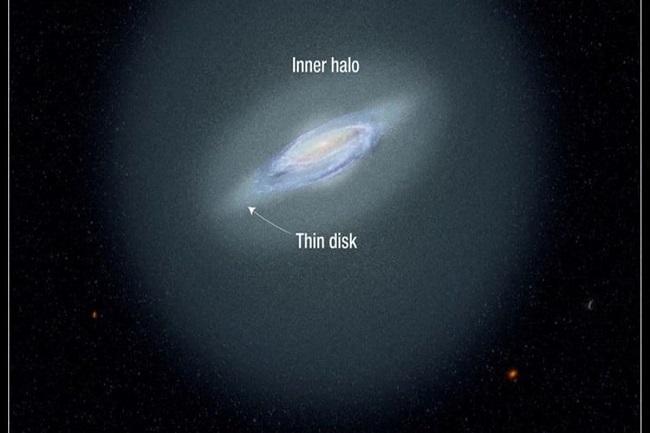Washington, DC, Gatra.com – Astronomers have detected in a stellar halo that represents the outer limits of the Milky Way, a group of stars farther from Earth than what is known in our own galaxy – almost halfway through a galaxy neighbor.
Reuters reported on Thursday (12/1) that researchers say these 208 stars inhabit the outermost reaches of the Milky Way’s halo, a spherical cloud of stars dominated by a mysterious invisible substance called dark matter that does not make it know only by its gravitational influence. . The farthest is 1.08 million light-years from Earth. A light year is the distance traveled by light in one year, or 9.5 trillion kilometres.
These stars can be seen using the Canada-France-Hawaii Telescope on Mauna Kea Mountain in Hawaii. It is part of a category of stars called RR Lyrae, which have a relatively low mass and generally contain an abundance of elements heavier than hydrogen and helium. The farthest seems to have a mass about 70% of that of the sun. No other star in the Milky Way measures farther than this.
Read also : There are small galaxies that are part of the Milky Way
Stars that inhabit the fringes of the galactic halo, which can be considered “orphan” stars, may originate from smaller galaxies that later collided with the larger Milky Way.
“Our interpretation of the origin of these distant stars is that they most likely originated in the halos of dwarf galaxies and star clusters which were then merged – or rather cannibalized – by the Milky Way,” Yuting said. Feng, Doctor of Science. astronomy.
He is a student at the University of California at Santa Cruz, which led the study, and is presenting this week at the meeting of the American Astronomical Society in Seattle.
“The parent galaxy was destroyed and gravitationally digested, but these stars are left at great distances as debris from the merger event,” Feng added.
The Milky Way has grown larger over time due to these disasters.
Read also : Super sharp image of the center of the Milky Way, the star of a million suns
“Larger galaxies grow by ‘eating’ smaller galaxies – by eating their own kind,” said study co-author Raja Guha Thakurta, who holds the chair of astronomy and astrophysics at UC Santa Cruz.
Containing both an inner and an outer layer, the Milky Way’s halo is much larger than the galaxy’s main disk, and the central bulge is full of stars. The galaxy, with a supermassive black hole at its center some 26,000 light-years from Earth, contains an estimated 100 to 400 billion stars, including the sun, which reside in one of the four main spiral arms that make up the disc of the Milky Way. The halo contains about 5% of the stars in the galaxy.
Dark matter, which dominates the halo, makes up most of the mass of the universe and is thought to be responsible for its basic structure. With its gravity influencing visible matter to gather and form stars and galaxies.
The outermost edge of the halo is a poorly understood region of the galaxy. These newly identified stars are almost half as far from the neighboring galaxy, Andromeda in the Milky Way.
“We can see that the fringes of the Andromeda halo and the Milky Way halo are really extended – and almost ‘back to back,'” Feng said.
The search for extraterrestrial life focuses on rocky Earth-like planets, which orbit in the so-called “habitable zone” around stars. More than 5,000 planets outside the solar system, called exoplanets, have been discovered.
“We don’t know for sure, but each of these outer halo stars most likely have planets orbiting them like the sun and stars, like the other suns in the Milky Way,” Guha Thakurta said.
26

“Evil pop culture fanatic. Extreme bacon geek. Food junkie. Thinker. Hipster-friendly travel nerd. Coffee buff.”







